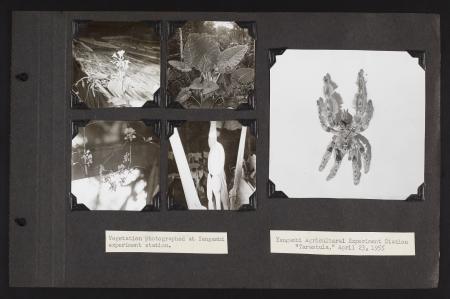Many individuals have donated generously to the Smithsonian over the years, starting with our founding donor, James Smithson.
Some people have donated collections, like ornithologist Major Charles Bendire who donated 8,000 birds eggs to start the United States National Museum’s oology collection in 1884. Others donated funds to fill voids in the growing U.S. national collection such as philanthropist J. Bruce Bredin who supported the USNM by funding a series of expeditions to the Caribbean Sea, the Belgian Congo, and the Yucatan Peninsula in the 1950s.
![Moonfish collected near Virgin Gorda, during Smithsonian Bredin Caribbean Expedition, 1956, Smithsonian Institution Archives, SIA RU007231 [SIA2012-0655]. Moonfish collected near Virgin Gorda, during Smithsonian Bredin Caribbean Expedition, 1956](https://ids.si.edu/ids/iiif/SIA-SIA2012-0655/full/400,/0/default.jpg)
As I’ve explored the journals and other material in our collections from these expeditions, I was a little surprised to find Bredin appear in the notes on an expedition team alongside scientists like Dr. Waldo Schmitt, Dr. Roy Sexton, and J. F. Clock. But as I dug further, I learned that Bredin was inquisitive by nature and not one to shy away from adventure. He was known for his enthusiastic approach to a broad range of projects, and became a pilot, allegedly to win the hand of his future wife, Octavia Mary du Pont.
Bredin accompanied Smithsonian curator of invertebrate zoology Dr. Waldo Schmitt who was already in his late sixties when he led the first of five expeditions over six years. His papers contain field diaries, correspondence, photographs, slides, data sheets, maps and films from these expeditions. The tens of thousands of specimens Schmitt and his team collected went to the USNM and have continued to be rich resources for biological study at the Smithsonian’s National Museum of Natural History, where they reside today.
Thanks for the specimens and your belief in the work of the Institution, Mr. Bredin!
Related Resources
- On Expedition with Waldo Schmitt, The Bigger Picture, Smithsonian Institution Archives
- Smithsonian-Bredin Caribbean Expeditions, 1956-1959, Smithsonian Institution Archives
Related Collections
- Smithsonian-Bredin Belgian Congo Expedition, 1955 - Photograph album, Waldo L. Schmitt Papers, 1907-1978, Record Unit 7231, Smithsonian Institution Archives
- Waldo L. Schmitt Papers, 1907-1978, Record Unit 7231, Smithsonian Institution Archives
Produced by the Smithsonian Institution Archives. For copyright questions, please see the Terms of Use.


Leave a Comment